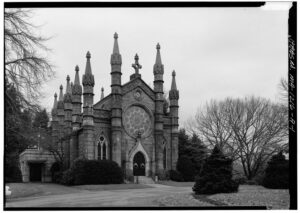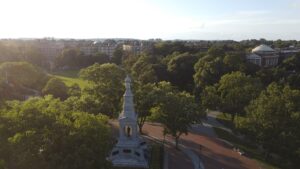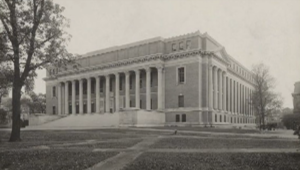Cambridge Common, a National Historic Landmark and public park in Massachusetts, has been part of American history since 1630. This area, near Harvard Square, has hosted significant events including serving as a campground for the Continental Army and as a location for public gatherings and protests.
Today, Cambridge Common is not just a historical site but also a recreational space with playgrounds, walking paths, and shaded areas. Maintained by the Cambridge Department of Public Works, it offers a mix of historical exploration and green space in the city.
Key Takeaways
-
Cambridge Common is a historic public park in Massachusetts with significant ties to American history.
-
The park combines its storied past with modern-day amenities and remains well-maintained by local efforts.
-
It serves as both a space for historical education and contemporary community recreation.
Historical Context of Cambridge Common
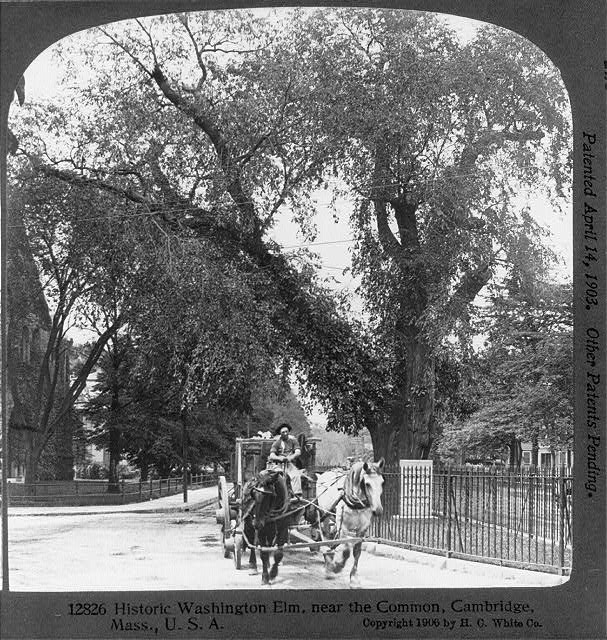
Cambridge Common, situated in Massachusetts, holds a significant place as a National Historic Site, deeply rooted in American history. This site gained prominence for being the first long-term headquarters of George Washington during the American Revolution.
Just a stone’s throw away from the prestigious Harvard University, which has been shaping minds since 1636, Cambridge Common shares a parallel narrative with the institution’s illustrious history.
Here, Washington played a crucial role in molding the Continental Army, marking his development as a leader and commander. Beyond its military importance, Cambridge Common is also intertwined with the cultural and social fabric of the nation.
It carries connections to colonial enslavement, community activism, and LGBTQ history, reflecting a broad spectrum of American societal evolution. The presence of Henry Wadsworth Longfellow, a renowned American poet, further elevates its historical value. Longfellow, who lived here for over 45 years, penned much of his influential 19th-century literature at this location, enriching American literary heritage.
Early Settlement and Development
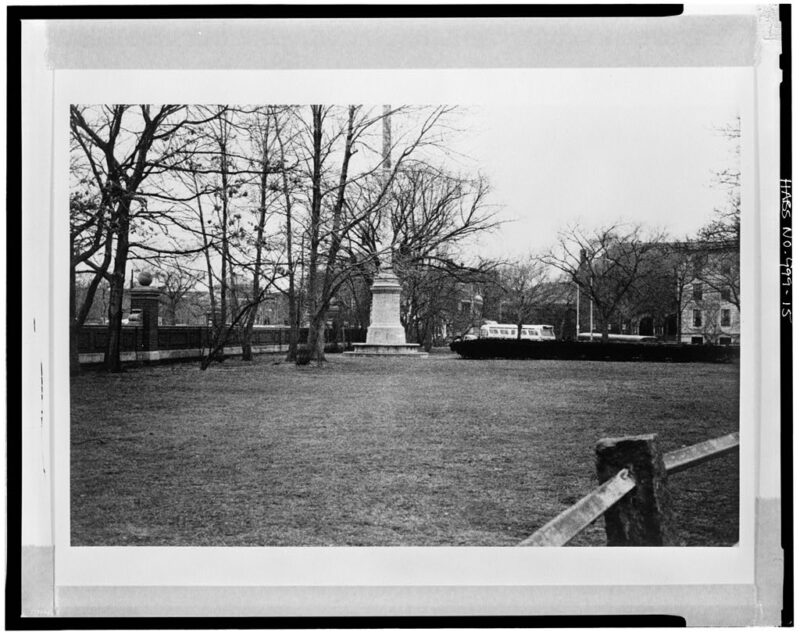
In the seventeenth century, the establishment of Cambridge Common was essential to the town’s original plans. The area, chosen for its suitability for farming and grazing, provided common ground where townsfolk could collectively use the space for their woodlots and pasture their oxen, sheep, and cows. Initially spanning an expansive area, it was a shared resource that epitomized the community efforts of early settlers.
The development of Cambridge Common followed the multifaceted needs of the growing town, evolving into a space central to the community’s daily functioning. It was here that the common pasture became a versatile landscape, serving an array of purposes throughout the changing seasons and years.
Role in the Revolutionary War
It was the rallying point for thousands, including local militia who drilled and prepared for what was to become a lengthy war of independence.
Notably, it became the scene of a significant assembly in response to the Powder Alarm of 1774, where a large, indignant crowd gathered as tensions rose between the American colonies and British rule. The Common was not just a meeting space but a symbol of American resilience and the collective spirit that fueled the uprising.
Designation as a National Historic Landmark
In recognition of its significant contributions to American history, Cambridge Common was designated a National Historic Landmark. This title is reserved for places that possess exceptional value to the nation’s heritage, a status that the Common rightly deserves given the key events and daily colonial life it bore witness to.
This historic recognition ensures that the story of Cambridge Common and its role in shaping the country is preserved and honored for future generations to understand and appreciate.
Physical Attributes and Features

Cambridge Common is a historically significant public park in Cambridge, Massachusetts. It spans approximately 16 acres and offers both a commemorative landscape and recreational amenities.
Landscape Design
The Common’s design integrates open green spaces with tree-lined pathways. Its landscape has evolved from colonial pastureland to a well-maintained park with diverse plantings. The park’s turf areas accented with mature trees underscore its role as a central community gathering space.
Monuments and Memorials
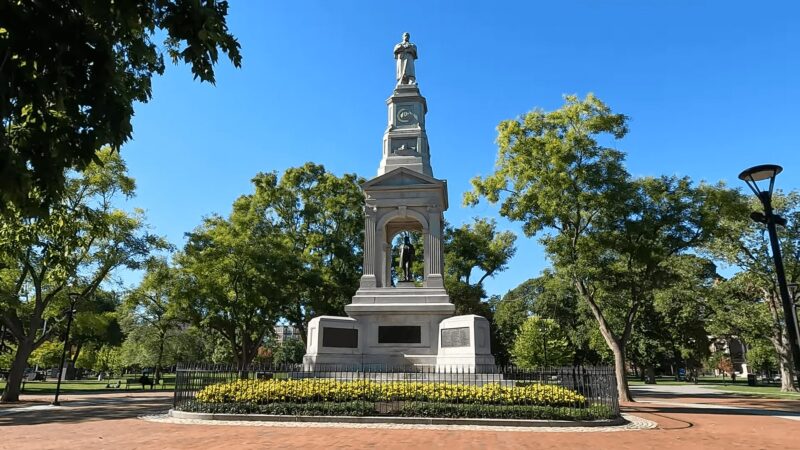
Dotted across the greenery are several monuments paying homage to historical figures and events. Notable among these is the Washington Elm memorial, which marks the believed location of General George Washington taking command of the Continental Army. Additional memorials contribute to the park’s status as a site of reflection on American history.
Recreational Facilities
Cambridge Common caters to active visitors with its playground located at the north end of the park. It provides an inclusive space for children of various ages. For leisure, spacious lawns throughout the Common accommodate picnicking, frisbee games, and casual strolls, making the park a versatile location for both relaxation and play.
Cambridge Common Today
The verdant expanse of Cambridge Common serves as both a historical monument and a vibrant public park in Massachusetts, continuing to be a pivotal gathering place for the community.
Conservation Efforts
Efforts to preserve the natural environment of Cambridge Common are ongoing. The City of Cambridge actively maintains the park’s 16 acres, ensuring that it remains a welcoming and sustainable green space for residents and visitors. Important historical features like the abandoned cannons and the Irish Famine Memorial are also conserved to educate future generations.
Cultural and Community Events
Throughout the year, Cambridge Common is a bustling hub for cultural and community events. It hosts a variety of gatherings from local performances to cultural festivals, transforming the historical site into a contemporary space for communal engagement. These regular events reinforce the Common’s role as an essential part of Cambridge’s modern identity.
The site often attracts students and faculty from the nearby Massachusetts Institute of Technology (MIT), who participate in and contribute to these vibrant community activities, bridging the gap between academic innovation and local culture.
FAQs
Cambridge Common holds significant historical importance and offers various points of interest for visitors.
What are the opening hours for Cambridge Common park?
Cambridge Common is accessible to the public and typically opens around 11:30 AM, closing at midnight.
What significant historical events took place at Cambridge Common?
The park served as a critical site during the American Revolutionary War and is renowned as the location where George Washington took command of the Continental Army.
How large is the Cambridge Common area in terms of acres?
Cambridge Common spans an area that originally extended from Linnaean Street to Harvard Square, but its current size in acres is not specified in the search results.
Where can I find George Washington’s headquarters in Cambridge?
George Washington’s headquarters, also known as the Longfellow House, is not directly within the Common but is located nearby, on Brattle Street.
What are some notable landmarks to visit within Cambridge Common?
Visitors can see several important landmarks including the Soldiers and Sailors Monument and the site of the “Washington Elm” where legend suggests Washington took command of the army.
Conclusion
Cambridge Common has maintained its historical significance since it first served as a communal pasture over three centuries ago. It transitioned from a vast swath of land, critical for early settler’s livestock and agriculture, to a National Historic Landmark. Its longevity is a testament to the community’s valorization of heritage, evidenced by its meticulous care and the ongoing civic activities within its bounds.





